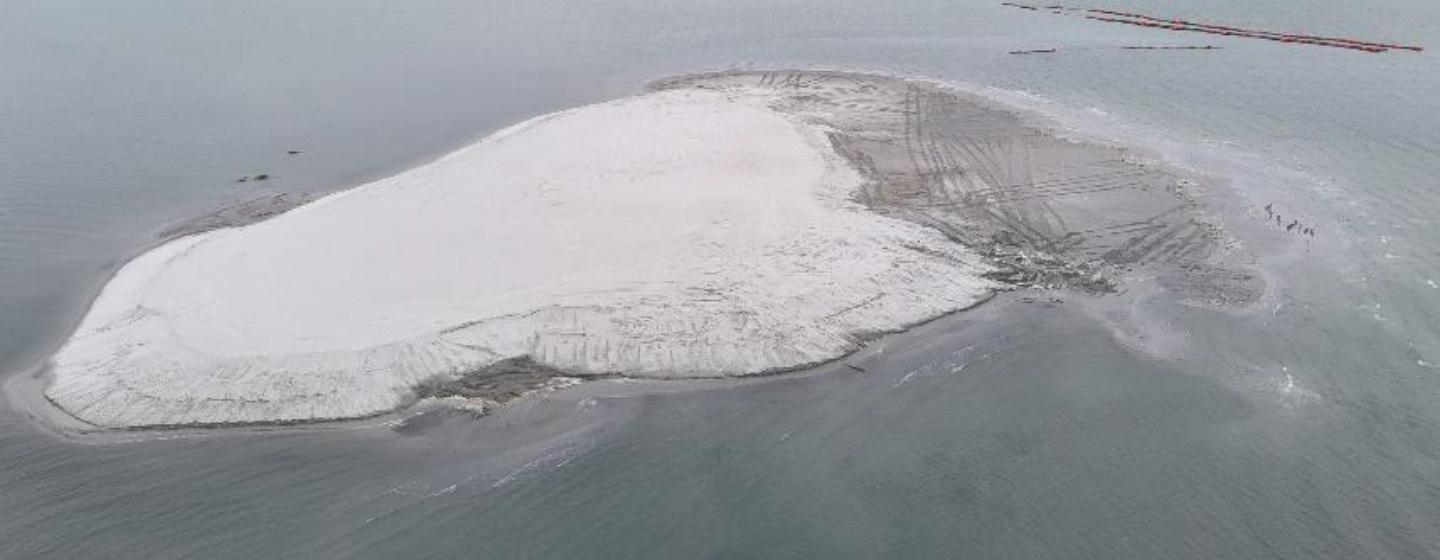Vanishing Island Reappears Off NC Coast


You could say Sandbag Island was “born” in the 1970s.
It sits between the Cape Lookout Lighthouse and Harkers Island and is owned and managed by the North Carolina Wildlife Resources Commission.
The idea for the island was pretty simple. The U.S. Army Corps of Engineers needed a place to put “dredge spoil,” the sand, mud and other materials scooped up from clogged waterways. Building an island to create a refuge for waterbirds was a convenient and relatively inexpensive way to do it.
It worked really well. In fact, Sandbag Island grew to almost 18 acres by the late 1990s. But wind, waves and hurricanes take their toll, and without a new dredging project, the island had almost vanished by 2023. All those nesting waterbirds had nowhere to go.
However, 2024 brought a $6.9 million dredge project to improve waterway access at Cape Lookout National Seashore and bring Sandbag Island back to life.
“The preservation of our coast is of paramount importance to us in Carteret County,” said Jimmy Farrington, chairman of the Carteret County Board of Commissioners, in a press release. “This project not only ensures the safety and accessibility of our waterways but also reaffirms our commitment to the environment. We are proud to partner with the National Park Service and the State of North Carolina to undertake this project, ensuring that the Cape Lookout National Seashore remains a natural treasure for generations to come.”
The Corps dumped almost 135,000 cubic yards of dredged material onto the little island, helping it to grow to almost 5 acres (about twice the area of a Manhattan city block).
The project created a boat channel between Harkers Island and Cape Lookout Lighthouse that is roughly 100 feet wide and 7 to 9 feet deep.
While mud and sand were used to build the new island, an additional 32,000 cubic yards of sand were dumped onto Barden Inlet directly in front of the lighthouse. The National Park Service hopes it will help protect the historic structure.
The North Carolina Wildlife Resources Commission said in a press release that two pairs of American oystercatchers, shorebirds that are a state species of special concern, settled in to nest on Sandbag Island days after dredge work was wrapped up. The commission hopes that because the work is finished, other species will arrive in 2025.
Because of its importance to nesting birds, Sandbag Island is a protected island. It has no visitors from March 1 to September 15. Anyone caught trespassing during that time frame may face a civil penalty.
“Many of the birds that use these islands, they need that open, sandy habitat,” Carmen Johnson, a wildlife diversity biologist with the North Carolina Wildlife Resources Commission, told Coastal Review. “They like going to the beach too, but whenever they’re nesting they need areas that are free from disturbance.”
On islands like Sandbag, waterbirds can incubate their eggs and, once their chicks hatch, raise their young away from beaches filled with people and dogs.